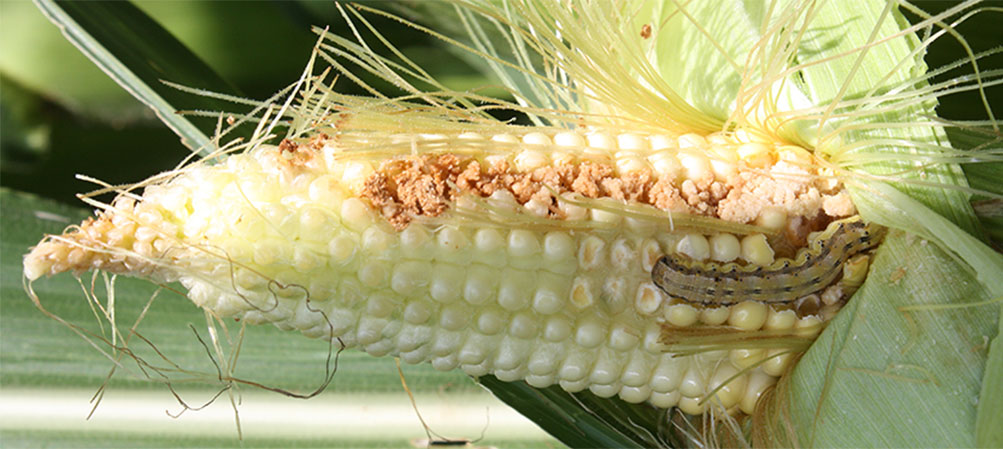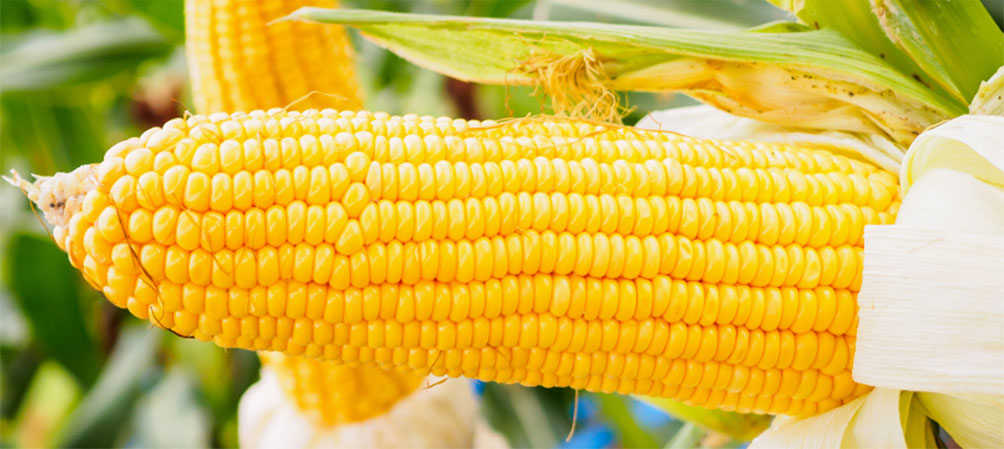Corn earworms migrate with winds and storms from southern states, with moths laying eggs in corn and other host crops. The best management practices for preventing this pest are to avoid late planting and to choose a trait technology like Trecepta® Technology that offers protection against corn earworm.
Identification and Scouting
What It Looks Like

Scouting Solutions

The most effective way to scout for corn earworm moths is by using pheromone traps. The trap should be placed just outside the southwest corner of the field, right before the first crop of corn begins to tassel. Whenever a trap catches a few moths a night for several nights in a row, a moth flight is occurring. Scouting for eggs immediately after traps catch moths can help to indicate the potential damage for a certain crop. Consider following these steps to scout for corn earworm eggs in corn:
- Sample five areas of the field
- Select 20 ears from each area for a total of 100 ears
- Clip silks from corn ear and place in a plastic bag
- Examine silks for eggs by separating over a dark surface
- You can also examine ears for larval damage by pulling them open and checking for earworms
Impact on Crops
Feeding from corn earworm could potentially impact grain quality.
Life Cycle





Tracking

Tracking corn earworm migration is possible. It involves the daily monitoring of insect traps throughout the country and is based on the hypothesis that increases in insect-trap counts correspond with increased migration risks. When a southern source of corn earworm is detected, it could be from a number of factors:
- Strong nighttime winds, low-level jet stream
- High- and low-pressure cells creating an “insect pump” effect
- Precipitation and downward-moving air serving as a “drop zone”
Management
Planting early can help avoid peak moth flights, and corn with tight husks can reduce feeding potential. Alternatively, some Bt trait technologies control or suppress corn earworm. It is worth noting that neither crop rotation nor tillage significantly reduces corn earworm survival.
Prevention

Trecepta® Technology
Products with Trecepta® Technology offer protection against corn earworm along with high yield potential.
Expert Advice
Trait Answers
Still have questions about protecting your yield against corn earworm? The experts at #TraitAnswers have the information you need to make your next insect management decision your best one yet.


